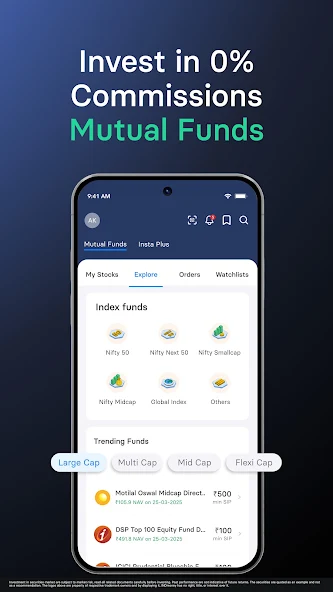Futures Trading has become increasingly accessible with the evolution of digital platforms and analytical tools. Today, anyone with a mobile device can participate in futures markets through a trusted Share Market App. However, entering the futures market without a strategy can lead to costly mistakes. This provides practical and tested strategies for traders looking to make informed and disciplined decisions in the world of Futures Trading.

By leveraging a smart approach, paired with the right trading tools, traders can navigate volatility, manage risk, and seek consistent performance. Let’s explore the essential strategies and principles that can shape your futures trading success.
Understanding the Futures Market
Futures contracts are standardized agreements to buy or sell an asset at a predetermined price at a future date. These contracts are widely used in commodities, equity indices, currencies, and more. Participants in the futures market include hedgers protecting against price changes, and speculators seeking profits from price movement.
Understanding contract specifications, expiry dates, and margin requirements is key before choosing a strategy. With a Share Market App, traders can track real-time data, manage positions, and stay updated with market news and events.
Core Strategies for Smart Futures Trading
1. Trend Following
Trend following involves identifying and trading in the direction of the prevailing trend. This strategy does not attempt to predict tops or bottoms but focuses on capturing the main body of a price movement. Simple tools such as moving averages can help confirm trends.
For instance, traders often use the crossover of a short-term and long-term moving average to signal entry. Stop-loss orders are essential to protect against reversals, while trailing stops help lock in profits as trends extend.
2. Mean Reversion in Range-Bound Markets
Some assets remain within defined price ranges over time. Mean reversion strategies aim to exploit these movements by buying when prices are below historical averages and selling when they are above.
Indicators like Bollinger Bands or RSI (Relative Strength Index) can support this strategy by identifying overbought or oversold conditions. Consistent monitoring, especially via mobile through a Share Market App, ensures timely execution in these fast-changing conditions.
3. Calendar Spreads
Calendar spreads, or inter-month spreads, involve buying and selling futures contracts of the same asset with different expiration dates. This approach reduces directional risk since both legs are linked to the same asset.
Traders use calendar spreads to take advantage of seasonal pricing, changes in storage costs, or interest rate differentials. Because both positions are partially offsetting, margin requirements are often lower, allowing better capital efficiency.
4. Hedging Spot Exposure
Hedging uses futures to reduce risk from a spot market position. For example, an investor holding physical gold may sell gold futures to protect against a price decline.
This approach is especially useful for producers or businesses with exposure to commodity or currency risk. Effective hedging requires correct position sizing and continuous monitoring to maintain alignment with the underlying exposure.
5. News-Based Trading
Economic announcements, central bank meetings, and geopolitical events can create sharp moves in futures markets. Traders who specialize in news-based strategies prepare for these events and act quickly to capitalize on market reaction.
Due to high volatility, it’s essential to use limit orders and predefined stop-loss levels. Alerts from a Share Market App help traders act quickly and avoid slippage.
Management in Futures Trading
1. Position Sizing
Risk should be determined before entering any trade. Many experienced traders risk no more than 1% to 2% of their capital per trade. This principle ensures that a losing streak doesn’t damage long-term equity.
Position sizing is calculated based on the distance between the entry point and the stop-loss level. Proper sizing protects against excessive losses.
2. Stop-Loss and Exit Planning
Having a stop-loss in place is non-negotiable in futures trading. Predefined exit points eliminate emotional decision-making during volatile market phases.
Some traders combine fixed and dynamic stops, adjusting their exit as the market evolves. This adds flexibility while maintaining discipline.
3. Emotional Discipline
Maintaining emotional control is essential. Decisions driven by fear or greed often lead to poor outcomes. Keeping a trading journal, reviewing past trades, and sticking to rules helps maintain objectivity.
Setting trading limits and taking regular breaks also aids mental clarity and decision-making.
Using Technology with a Share Market App
1. Real-Time Charting and Indicators
Today’s Share Market App offers more than just trading access. Real-time charts, technical indicators, and news feeds help traders analyze and act quickly.
Customizable layouts, watchlists, and multi-timeframe charting allow traders to adapt their strategy in real time, whether they trade from home or on the go.
2. Alerts and Automation
Conditional orders, automated alerts, and notifications are powerful tools. They allow traders to place bracket orders, set target profits, and manage risk efficiently.
Apps that support automation reduce manual errors and ensure consistency in execution, which is critical for long-term trading performance.
Building a Complete Trading Plan
No single strategy works at all times. Successful traders combine different methods based on market conditions. For example, trend-following may perform well in trending markets, while mean reversion might work in consolidating phases.
Combining strategies with proper risk control, journaling, and periodic review allows traders to stay adaptable. A Share Market App helps monitor performance metrics and optimize approaches as market dynamics shift.
Conclusion
Futures Trading, when approached with structure and discipline, can be a valuable part of a diversified portfolio. The use of a reliable Share Market App further enhances a trader’s ability to execute strategies effectively and stay informed.
By following proven methods such as trend following, mean reversion, calendar spreads, news-based momentum, and hedging—while applying sound risk management practices—you can improve decision-making and reduce the emotional impact of market volatility.
Whether you’re a new trader or refining an existing system, having a clear, consistent approach to Futures Trading, backed by the features of a modern Share Market App, will support your journey toward long-term success.